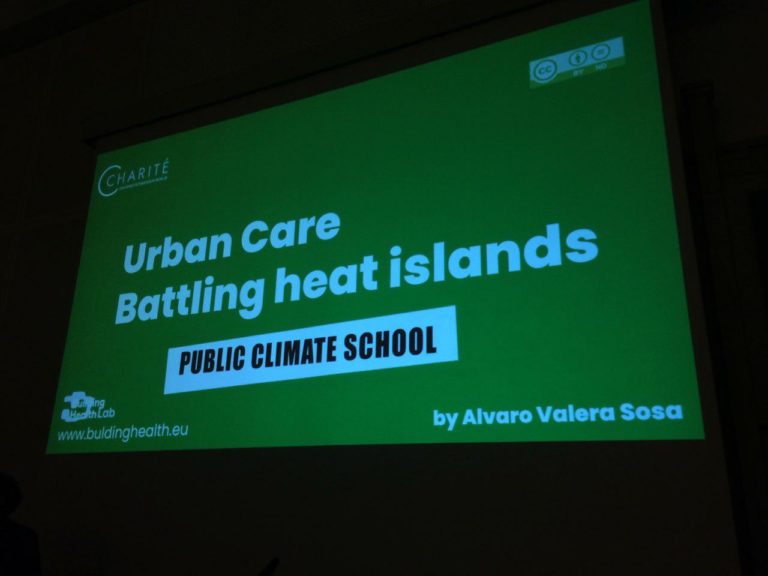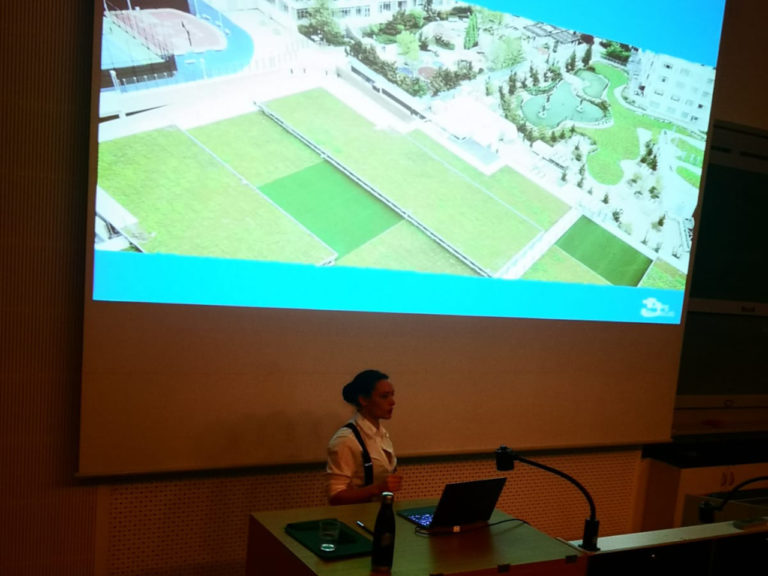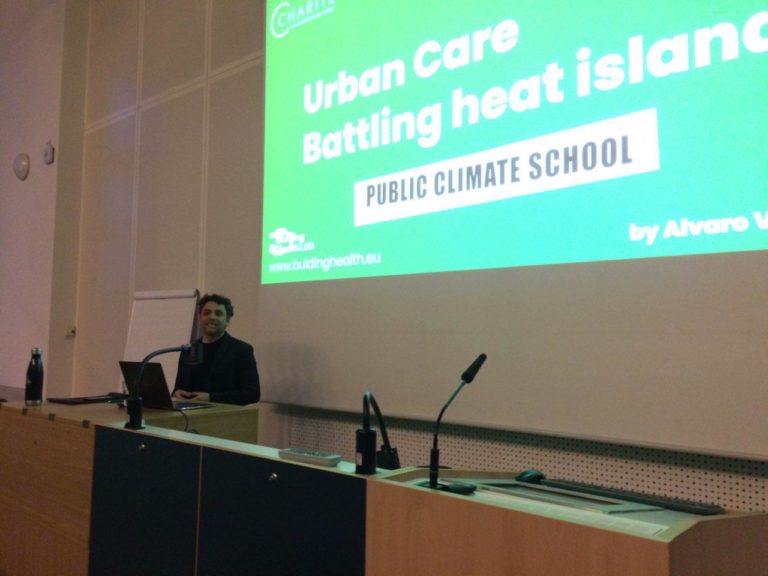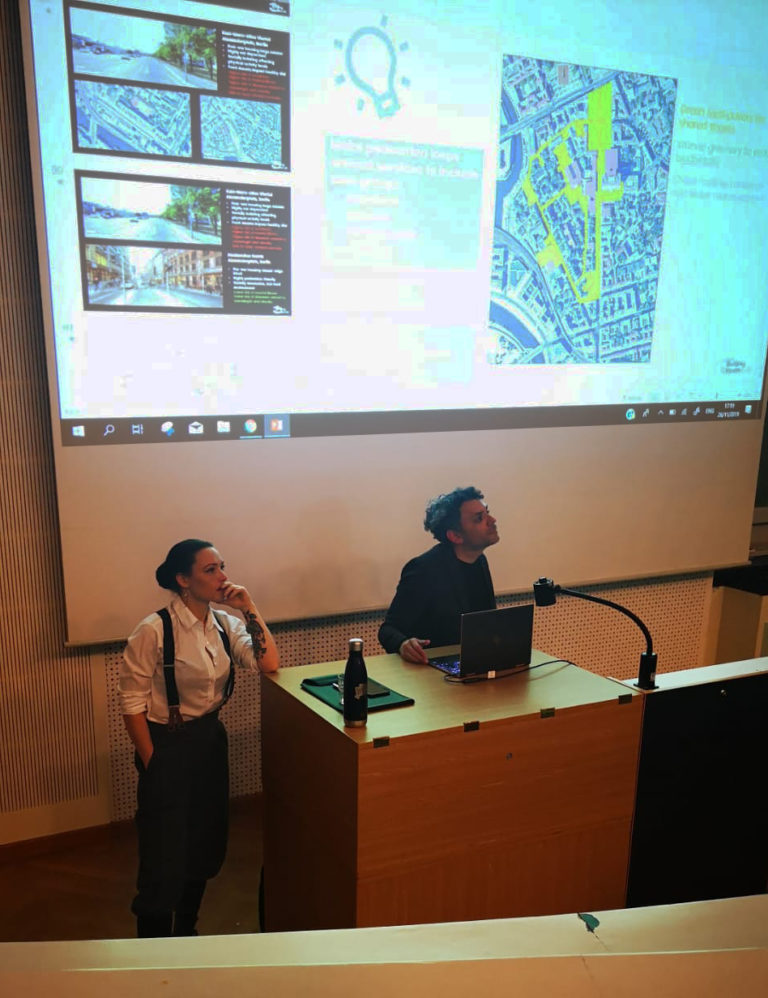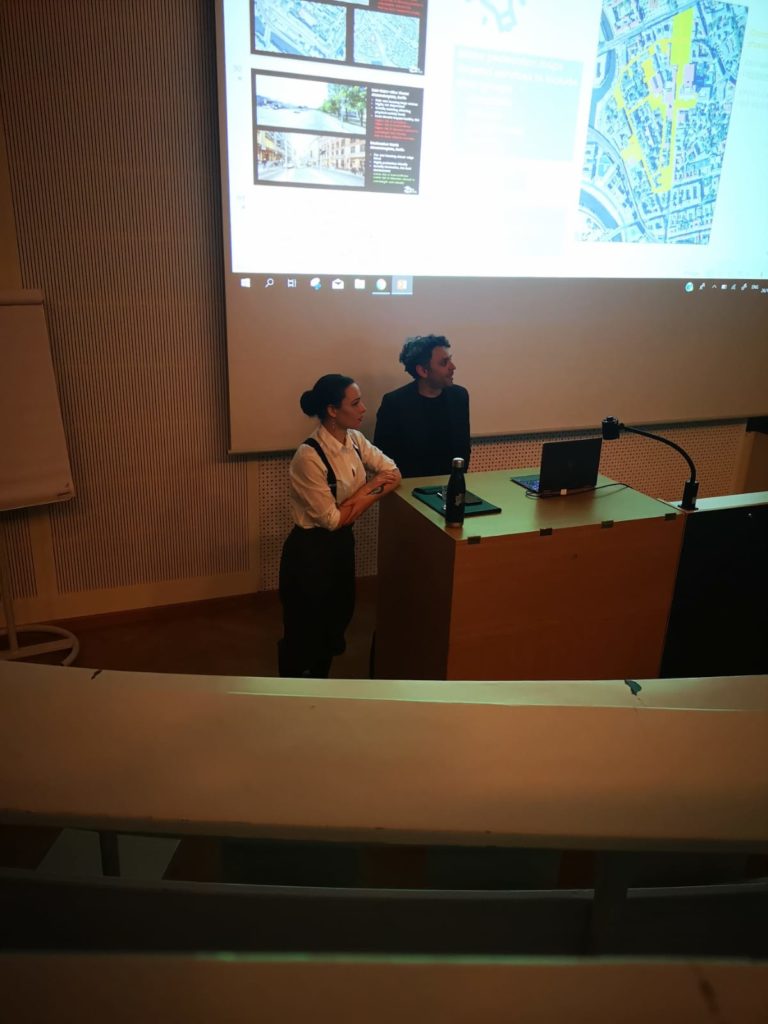With over 160 activities, Students for Future took over German universities from the 25th to the 29th of November. The Charité Universitätsmedizin community invited Building Health Lab to participate with a lecture on Urban Heat Islands to explain its influence on climate change and biodiversity loss. It covered, its definition, causes, impacts, and actions to battle its negative effects.
The discussion elaborated on the possibility of starting a campaign for change at home, at the Charité Campus Mitte. Where evidence-based designs applied to its landscape and buildings, would benefit the health of the planet and of its entire community including patients.
Expert in biological sciences from Green Roof Diagnostics Dr. Anna Zakrisson joined the discussion to explain how green and blue roofs can effectively contribute in developing a sustainable urban plan. Her roof solutions together with BHL’s street level approach offered a course of action for students to shape Charité towards being a Health Promoting Hospital: An institution beyond excellence in research, teaching, and clinical care that also cures the health of the planet.
Our thanksfulness to Charité students especially Leonie Maier and Sophie G. for organizing and hosting the event.
The following points summarize highlights of the lecture and the most relevant conclusions:
1_ Issue
climate change actions can be worked locally by battling urban heat islands (UHI).
2_ Case
Most urban sites, as for example the Charité Mitte campus, form urban heat islands that impact the environment and affect pedestrians’ health and well-being when seeking for care services or doing daily errands; Especially of slow groups: patients, the elderly, children and people with disability.
3_ Causes
These urban sites and neighborhoods waterproof up to 80% their total surface area (with mainly streets and roofs) by using hard materials which absorb heat, allow rainwater runoff, and block passive cooling processes such as evapotranspiration.
4_ Impacts
The most evident impacts are high costs for sewage services and energy consumption, on top of the negative impacts to people and planet health which today are at the aim.
5_ Actions
UHI main elements such as streets and buildings must and can be retrofitted with the following actions:
(a) install green and blue roofs with water retention and detention features that enable an efficient passive cooling process (evapotranspiration) while avoiding runoffs;
(b) reduce car lane width and excessive parking with green strips, avoiding asphalt and other hard surfaces which retain heat and pollutants;
(c) develop green respite areas: rain gardens with urban furniture (for water storage) at the reach and convenience of slow groups to rest and recover in a safe, comfortable, and pleasant manner;
(d) design a pedestrian loop that connects priority services for slow groups with green respite areas using green pavers (for water to seep) which are friendly to people and the planet.
For technical enquiries and information about our feasibility evaluations please contact us at: [email protected]
